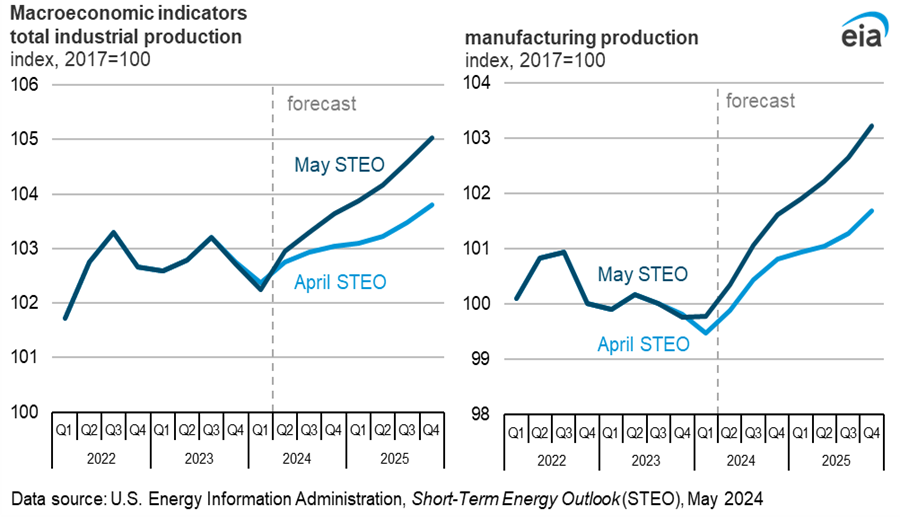Electricity, coal, and renewables
Electricity generation
Monthly electricity demand in the United States is highest during the summer months of June through September when most U.S. households use air conditioning. U.S. cooling degree days in our forecast are about the same as in 2024. Despite a lack of demand growth for air conditioning, we expect growing power demand from the commercial and industrial sectors. We expect strong demand growth in the commercial sector because of the expansion of data centers. Based on updated load growth forecasts, especially in the Electricity Reliability Council of Texas (ERCOT) and PJM independent system operators, we have increased our forecasts of electricity use in the commercial sector compared with last month’s forecast. We forecast that total U.S. electricity generation this summer will increase by 1%, or 14 billion kilowatthours (BkWh), compared with summer 2024..
We expect that generation from U.S. natural gas-fired power plants between June and September 2025 will be 3% lower (23 BkWh) than the summer of 2024 because of higher natural gas prices and the continuing increase in new solar generating capacity. We expect U.S. solar generation this summer will grow by 33% (30 BKWh). Improving water supply in the western states leads to a forecast 6% increase (5 BkWh) in U.S. hydroelectric generation.
The Electric Reliability Council of Texas (ERCOT) will likely experience the largest summer-over-summer increase in generation compared with last year as a result of growing electricity demand from data centers and new manufacturing facilities. Forecast natural gas generation in Texas falls this year in response to the growth in generation from new solar facilities and a smaller increase in wind generation.
The Midwest is also forecast to see an increase in solar generation this summer along with less natural gas generation. Natural gas generation in the Northwest drops in response to higher hydropower output because this area of the country has significant hydro resources. In the Southeast, we forecast that nuclear generation returns to normal after unplanned outages at three reactors last summer.
Coal markets
We expect coal production to remain flat at 512 million short tons (MMst) in 2025 while coal consumption increases 4% to 428 MMst. Coal stockpiles have fallen from 2024 as cold weather in January and February increased power demand and natural gas prices made coal more competitive.
Although coal stockpiles held by the power sector increased during April and May, we forecast that stocks will fall to approximately 120 MMst in August and September before rising slightly during the fall shoulder season. Recent reductions in coal stockpiles have been concentrated in the Midwest. Coal generation has been strong in the Midwest because coal prices in the region have generally have been lower compared with other census regions. Meanwhile, natural gas prices in the first half of 2025 have averaged above last year’s levels during the same time period, particularly in the Midwest where a significant portion of the coal fleet exists and operates. We forecast that natural gas prices will be above last year’s levels for the remainder of 2025 and 2026.
With rising consumption and flat production, we forecast that coal stocks in the electric power sector will fall to 113 MMst in 2025. We expect a further drawdown of stockpiles next year. In our forecast, coal stocks held by the power sector end 2026 at 102 MMst, as exports increase to 98 MMst while consumption falls to 403 MMst and production falls to 480 MMst.




